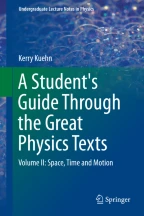
At the outset of Book I of his Principia, Newton defined a centripetal force as one “by which bodies are drawn or impelled, or any way tend, towards a point as to a center.” Now, in Section II of Book I, Newton considers in more detail the effect that centripetal forces have on bodies. He is particularly interested in determining the characteristics of the motion generated by a centripetal force, and also the conditions under which one can legitimately infer the action of a centripetal force acting on a body. The theorems and propositions which Newton here develops in an abstract and general way will eventually be employed in Book III to the practical problem of understanding planetary motion.
For if a body by means of its gravity revolves in a circle concentric to the earth, this gravity is the centripetal force of that body.
—Isaac Newton
This is a preview of subscription content, log in via an institution to check access.
eBook EUR 50.28 Price includes VAT (France)
Softcover Book EUR 63.29 Price includes VAT (France)
Hardcover Book EUR 89.66 Price includes VAT (France)
Tax calculation will be finalised at checkout
Purchases are for personal use only
The versed sine of an arc on a unit circle is defined as \(1 - \cos\) . It is also known as the sagitta of the arc, since it is the length of a line segment which connects the center of the arc to the center of the chord which forms its base, just as an arrow, when nocked, connects the arc of a bow to its string. Sagittarius, after all, is an archer.—[K.K.].
Proposition 3, in which Newton considers centers of force which are themselves subjected to an accelerative force, has been omitted for the sake of brevity. We continue with the Scholium after Proposition 3.<—[K.K.].>
i.e. divided by—[K.K.].A duplicate ratio of two numbers is the square of the ratio; subduplicate ratio is the square root of the ratio; and a sesquiplicate ratio is the cube of the square root of the ratio. A simple ratio of two numbers is just that.—[K.K.].
This set of questions was informed by the careful treatment of Newton’s Book I, Sect. II, Proposition 4, beginning on p. 154 of Densmore, D., Newton’s Principia, The Central Argument, 3 ed., Green Lion Press, 2003.